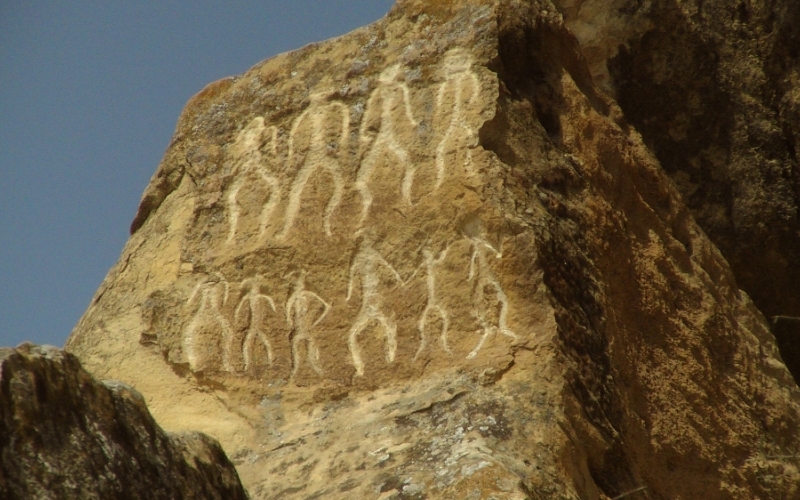
Gobustan with its many rock paintings seems to be a unique stone book, whose pages tell of the lifestyle, occupation, religious beliefs and early art of people who settled here thousands of years ago. In fact, it is the chronicle of one of the centers of the world civilization embossed on rocks.
On the territory of the reserve with a total area of 537 hectares, one of the world's largest collections of ancient cave paintings is concentrated - there are more than 6,000 thousand petroglyphs. This unique monument of global scale was included in the UNESCO World Heritage List in 2007. In Gobustan State Historical-Artistic Reserve, you can also see the sites of ancient people, the remains of a large prehistoric cromlech and other evidence of the inhabitants of the region of the Stone Age and subsequent periods.
Gobustan rocks provided trees, shrubs and grasses with excellent protection against heat and winds. And following the vegetation, animals- predators and herbivores, too, found shelter here. Of course, ancient hunters who once came to these places also appreciated all the benefits of the huge “block of flats” built by nature and willingly settled here. Gobustan was inhabited for thousands of years. There is a lot of evidence for that. In an area of 3,096 hectares that forms the nature reserve, archaeologists discovered more than six thousand rock drawings, settlements, burial mounds, formerly inhabited caves, megalithic structures, traces of settlements and tombs.
The Gobustan rock paintings belong to different epochs and cover a very long period from the 10th millennium BC to the Middle Ages. Because of this particularity alone, the Gobustan stone book is considered unique in the collection of other rock paintings that exist in the world. Most often, ancient artists portrayed men: hunters, fishermen or rowers. In the later cave paintings, riders can be found too. At the same time, some researchers note similarities between these Gobustan images and petroglyphs found in East Africa.
The late Norwegian anthropologist Thor Heyerdahl (1914¬2002) was fascinated by the carvings at Gobustan, especially the images of reed boats. On seeing the famous image of a multi-seat boat of the 6th millennium BC among the rock carvings of Gobustan, he became firmly convinced that, most likely, it was a reed vessel related to Sumerian ones. Therefore, people who lived in Gobustan could have contacts with the world’s oldest civilizations.
In 2011, a large modern museum was opened in Gobustan. An area of 2,460 square meters includes exhibitions about World Heritage sites, the history of the discovery of petroglyphs, ancient people living in the territory of Gobustan and its original flora and fauna. More than 100,000 items found by archaeologists during excavations are stored in repositories. These are tools and weapons, jewelry, charms, animal bones, plant seeds, etc. In 2013, the Gobustan Museum became one of the winners of the European Museum of the Year Award (EMYA).
Today, thanks to the rock paintings, archaeological finds and paleontologists discovered in Gobustan, we have a glimpse of the lives of our distant ancestors and a chance to try to imagine their way of life and the world around them. The Gobustan stone book has not been read to the end yet. Many of its pages have not been found yet. Others require deciphering and interpretation. And one can only imagine how many more secrets and mysteries this chronicle of millennia contains.
Views: 261
